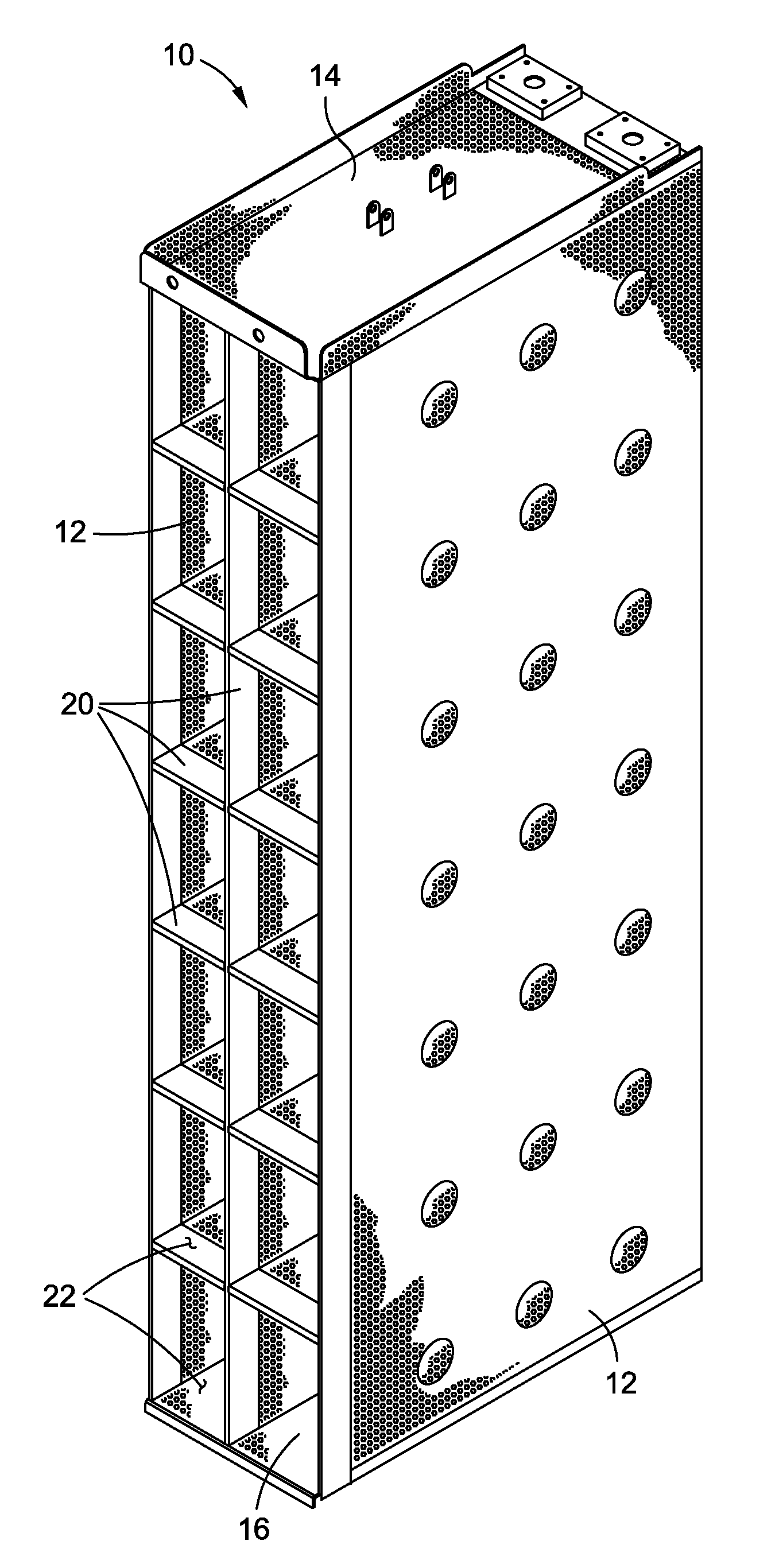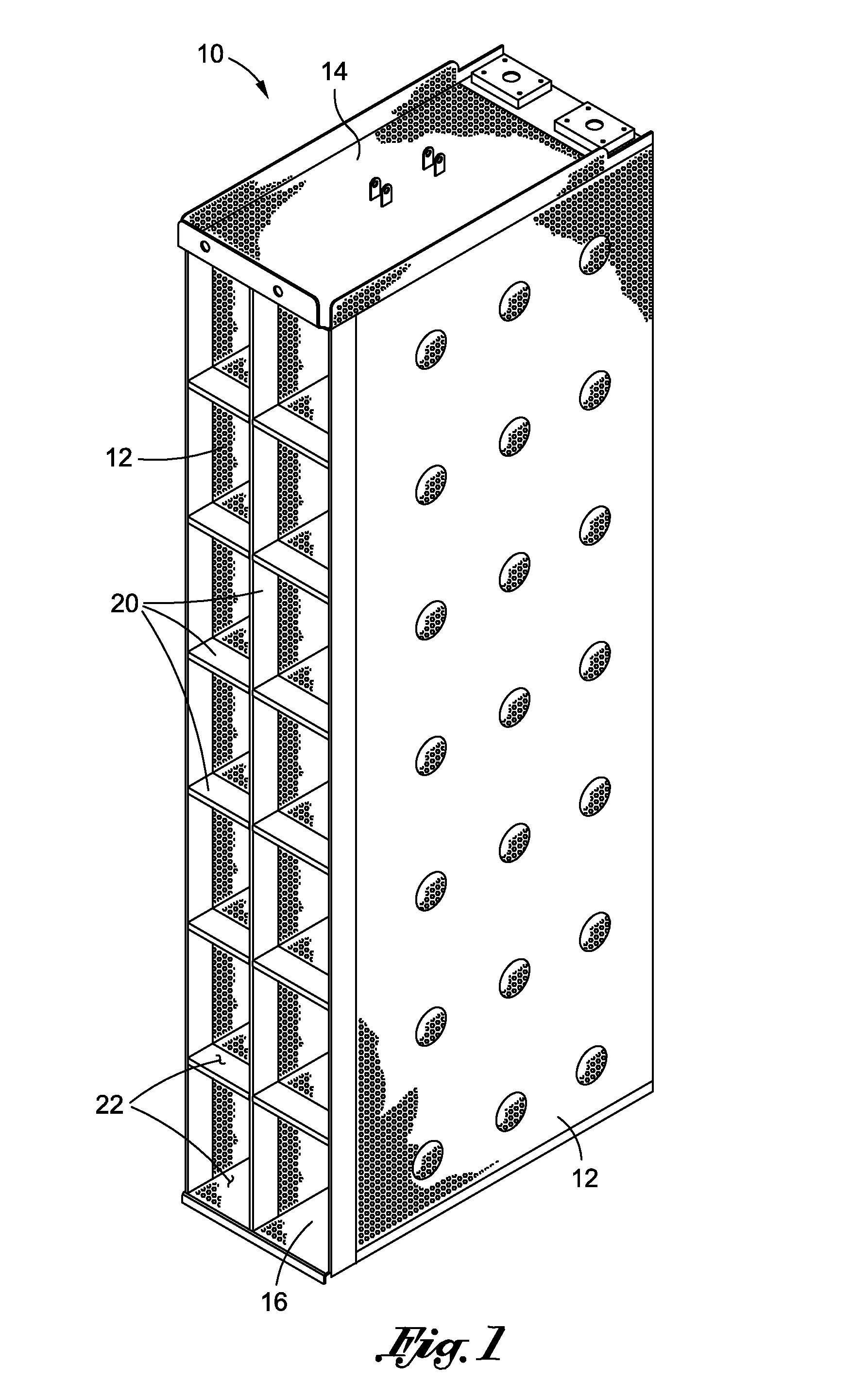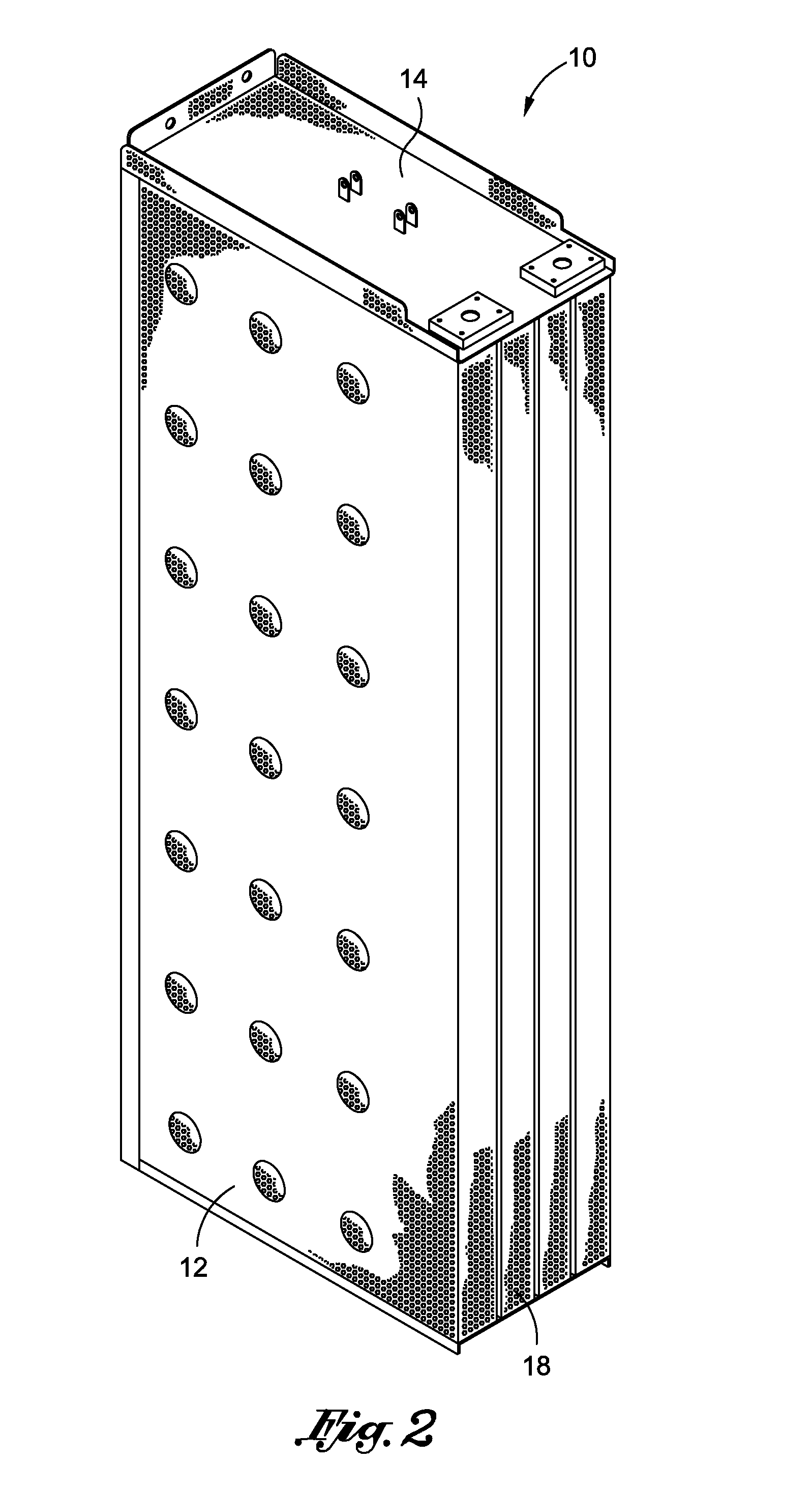Enhanced nuclear sump strainer system
a strainer system and nuclear technology, applied in the direction of nuclear elements, separation processes, greenhouse gas reduction, etc., can solve the problems of affecting the cooling effect, affecting the flow rate of the emergency core cooling system, and losing the complex geometric surface advantages, etc., to facilitate the creation of a debris bed of low density, facilitate the creation of the bed, and reduce the effect of transportability
- Summary
- Abstract
- Description
- Claims
- Application Information
AI Technical Summary
Benefits of technology
Problems solved by technology
Method used
Image
Examples
first embodiment
[0033]Referring now to FIG. 5, the strainer module 28 of the strainer system 5 is shown as being outfitted with a debris interceptor 34 which comprises a sacrificial strainer screen 36 constructed in accordance with the present invention. The strainer screen 36 is cooperatively engaged to the strainer module 28 so as to protrude from the primary strainer surface defined thereby. As a result, an auxiliary suction plenum 37 is defined between the interior surface of the strainer screen 36 and the primary strainer surface of the strainer module 28.
[0034]In the exemplary embodiment shown in FIG. 5, the strainer screen 36 has a generally serpentine configuration. Due to its serpentine configuration, the strainer screen 36, when viewed from the perspective shown in FIG. 5, defines a spaced pair of top panels 38 which each have a generally triangular configuration. As will be recognized, the serpentine configuration of the strainer screen 36 results in the same defining a greater outer sur...
second embodiment
[0038]Referring now to FIG. 6, the strainer module 28 of the strainer system 5 is shown as being outfitted with a debris interceptor 34 which comprises a sacrificial secondary strainer 42 constructed in accordance with the present invention. The secondary strainer 42 is cooperatively engaged to the strainer module 28 so as to protrude from the primary strainer surface defined thereby. As a result, portions of the secondary strainer 42 and the primary strainer surface of the strainer module 28 collectively define an auxiliary suction plenum 43.
[0039]In the exemplary embodiment shown in FIG. 6, the secondary strainer 42 has a configuration which closely mirrors that of the underlying strainer module 28. In this regard, the secondary strainer 42 has a generally quadrangular configuration and is formed from a plurality of generally planar plates which are attached to each other in a prescribed arrangement. More particularly, when viewed from the perspective shown in FIG. 6, the secondar...
third embodiment
[0045]Referring now to FIG. 7, the strainer module 28 of the strainer system 5 is shown as being outfitted with a debris interceptor 34 which comprises a sacrificial mesh layer 62 constructed in accordance with the present invention. The mesh layer 62 is cooperatively engaged to the strainer module 28 so as to cover and protrude from the primary strainer surface defined thereby.
[0046]In the exemplary embodiment shown in FIG. 7, the mesh layer 62 is of a prescribed thickness, and is preferably fabricated from a layered stainless steel mesh such as Tissmetal® Type 450-16. The mesh layer 62 may be positioned over a perforated stainless steel plate which is sized and configured to cover the entirety of the primary strainer surface of the strainer module 28. The mesh layer 62 may alternatively comprise a stainless steel mesh screen with 62 are such that the entirety of the primary strainer surface of the strainer module 28, and thus then inflow ends 24 of each of the strainer pockets 22 ...
PUM
| Property | Measurement | Unit |
|---|---|---|
| Pressure | aaaaa | aaaaa |
| Flow rate | aaaaa | aaaaa |
| Size | aaaaa | aaaaa |
Abstract
Description
Claims
Application Information
 Login to View More
Login to View More - R&D
- Intellectual Property
- Life Sciences
- Materials
- Tech Scout
- Unparalleled Data Quality
- Higher Quality Content
- 60% Fewer Hallucinations
Browse by: Latest US Patents, China's latest patents, Technical Efficacy Thesaurus, Application Domain, Technology Topic, Popular Technical Reports.
© 2025 PatSnap. All rights reserved.Legal|Privacy policy|Modern Slavery Act Transparency Statement|Sitemap|About US| Contact US: help@patsnap.com



